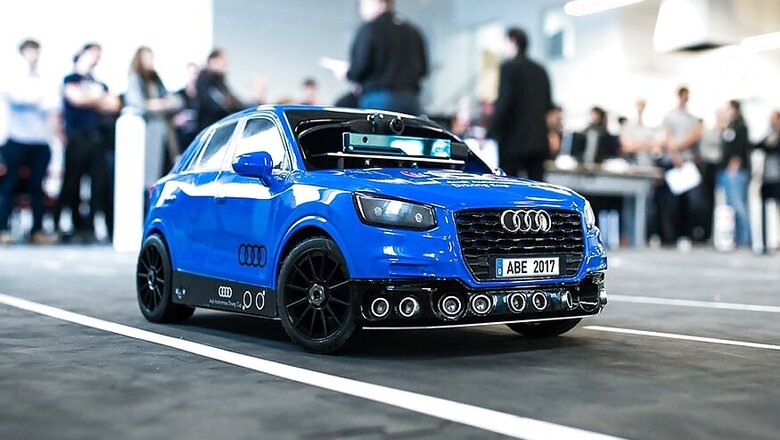
views
On November 15 and 16, Audi will be hosting the third edition of the Audi Autonomous Driving Cup in Ingolstadt, Germany. It's a competition that pits eight teams form eight different universities against each other for a cash prize.
Each team starts off with the same 1:18 scale model Audi packed with sensing equipment provided by Audi. "The setup of the sensor system and central computer beneath the model cars' bodywork is essentially the same as in a production automobile," explained Dr. Florian, Head of Software Development Tools and Methods at Audi Electronics.
However, where each car is unique is in the software that brings all the information from the various sensors together in order to achieve autonomous diving capabilities. In each case, it has been created by one of the competing teams.
Therefore, the object of the competition is to see which model car can complete a lap of Audi's test course, which includes parking and reversing maneuvers in the quickest time without bumping into objects, failing to stop at junctions, failing to identify temporary traffic lights, or traveling too close to the vehicle in front as the course will be a miniature version of a real urban environment complete with other traffic and road users, including pedestrians.
There is no question that the automotive industry is at a crossroads. However, the problem isn't so much whether to turn right or left or plough straight ahead, it's the fact that technically speaking, it's traveling down two parallel roads at the same time; one leads towards electrification and the end of the internal combustion engine and the other towards full automation where every person riding in a vehicle is a passenger.
But what both routes have in common is that car companies don't have the inherent skills to navigate them on their own, without help from others, whether it's start-up companies, suppliers, perceived smaller competitors, individual developers, or, in the case of Audi's competition, the students that could go on to become stars of AI, cloud computing, robotics, data science and software architecture.


















Comments
0 comment